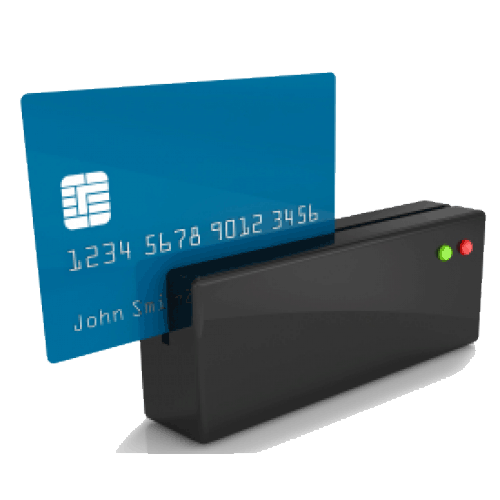Magnetic Strips – How They Work
 The chances are pretty good that at some point today you will use a card that has a magnetic strip on it. Your credit card, your office ID, or maybe your hotel room card. Everybody uses them, but have you ever wondered how they work?
The chances are pretty good that at some point today you will use a card that has a magnetic strip on it. Your credit card, your office ID, or maybe your hotel room card. Everybody uses them, but have you ever wondered how they work?
What is a magnetic stripe card?
The first magnetic stripe cards were created in the 1960s when an engineer at IBM found a way to combine magnetic tape, which was commonly used in mainframe computers for data backup, with a plastic card substrate. Since the process of storing data on magnetic tape was well-established, this was an ideal way to store a limited amount of information in an easy to carry form.
Each magnetic strip on a card is encoded with specific information. The “information” on each card is actually thousands of tiny, iron-based particles that have been magnetized – or set – in different directions by a device that produces a strong magnetic field. There are an almost infinite number of combinations that can be produced, which makes them so incredibly useful.
On each magnetic strip, there are either two or three data tracks. Each track contains specific information. Track one typically stores an account number, the cardholder’s name, the expiration date of the card and any other information relevant to its use. Track two was developed by the banking industry and typically stores a copy of the first track but without the name of the cardholder. Track two also has a service code which includes security functions, such as what type of transaction is permitted with the card. The third track is rarely used (and may not be present at all), but can be loaded with any necessary information.
 The device that actually creates the combination of magnetized particles is a solenoid – essentially a wire coil that is wound around a metallic core which produces a strong magnetic field when a current is passed through it. This device encodes the required information onto the stripe, which is then pasted on a plastic card.
The device that actually creates the combination of magnetized particles is a solenoid – essentially a wire coil that is wound around a metallic core which produces a strong magnetic field when a current is passed through it. This device encodes the required information onto the stripe, which is then pasted on a plastic card.
How does a magnetic stripe reader work?
When a card with a magnetic strip is moved back and forth over any kind of ‘reader head’, such as the swiping device on your hotel door or at the supermarket checkout, voltage is introduced into the coils of the card reader device.
The voltage can be recorded electronically, and is then read by a computer (or a processor installed within the reader) to authenticate a user (in the case of identity cards) or a transaction (in the case of credit/debit cards).
Why do they stop working?
As you well know, we usually put these cards through quite a bit of abuse. In and out of your wallet. Up and down through the swiping machines. Over time, the magnetic particles can be scratched or just plain wear off of the card.
The other issue, ironically enough, is the same thing used to create it – magnetism. A strong enough magnetic current, applied too close to the magnetic stripe, can rearrange or erase the magnetized iron particles. And the current doesn’t have to be very strong, either. A basic refrigerator magnet has enough magnetic current to do damage if it’s brought too close to the card.
Return to the Tech Trends Newsletter

